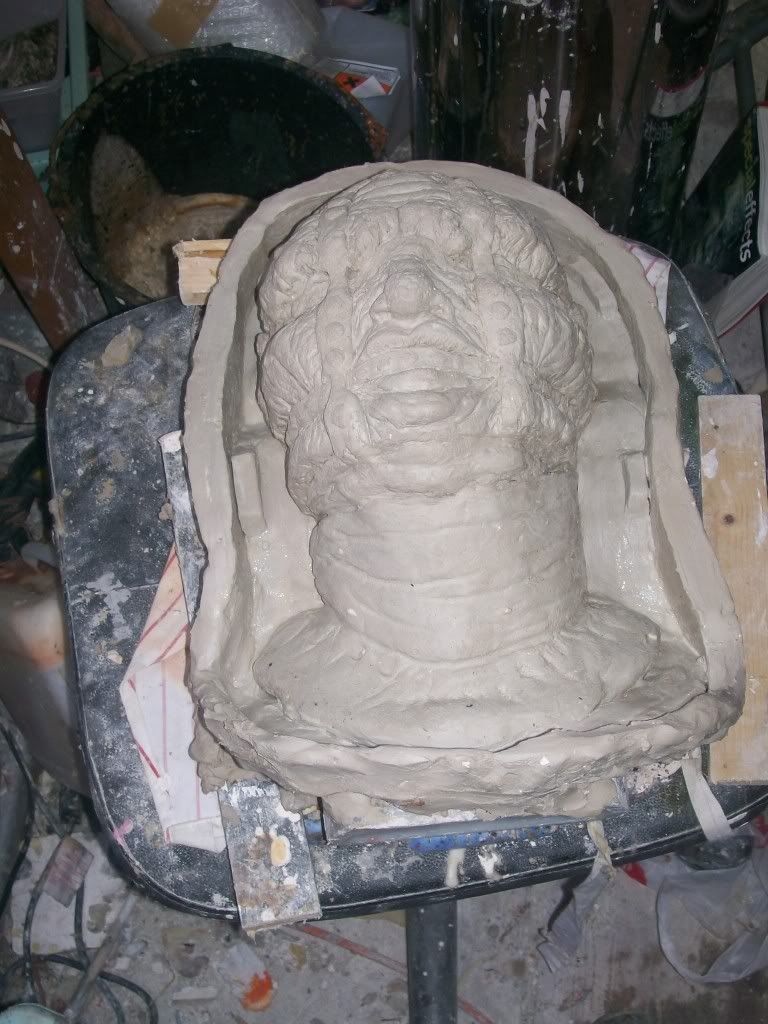To make latex masks you'll need a plaster or stone mould, i use both fine casting and herculite for my plaster moulds, you need plaster as the mould absorbs the moisture from the latex leaving a rubber build up inside the mask,you can't do this with a silicone or fibreglass mould.
You need to make a two part mould, so i build a clay wall at the midpoint of the sculpture, usually going ear to ear, making the wall 90 degree's to your sculpt. it needs to be completely flush to your sculpture, with no gaps or iregularity's or you will end up with an awkward seam to remove, heres a pic of a sculpt i finished with the clay wall applied and just about ready for casting the first half
you'll also see i added keys to the wall so that once the plaster is put on the next half will fit properly.
I seal the clay sculpt and clay wall with a couple of light coats of krystal clear followed by a matting spray, this stops the plaster beading up on the surface , i then mix up a small batch of plaster and do the detail coat, brushing the plaster on and making sure it gets into all the details, once that sets up, i add thickened plaster over this with strips of hessian cut into strips, this adds strength to your finished mould, other people use hemp or angel hair, but this works for me
once you have moulded the first half, turn over the sculpt, remove the clay wall, and use vaseline or a spray release on the exposed plaster wall, otherwise if you don't seal it the plaster will stick to itself and you'll never get the mould apart, and do the same again on the back half of the sculpt.
i leave the mould to set up overnight, pry it apart, clean out the clay, clean with alchohol and a small brush to remove any residue, and then put the mould back together, tape or tie the two halves together, spritz the inside with a spray bottle of water,(this helps eliminate bubbles in your latex casting, by drawing air from the fresh plaster).
i fill the mould completely with latex, leave for an hour or two, then empty it out, leave overnight upended to drain and dry, then powder the inside of the mould with baby powder, latex will stick to itself if you don't powder it.
finally open your mould, trim the seam with cuticle scissors and or a dremmel with a cotton or felt wheel added clean and paint.
mark alfrey's standard moulds and castings is a great dvd for mould making

